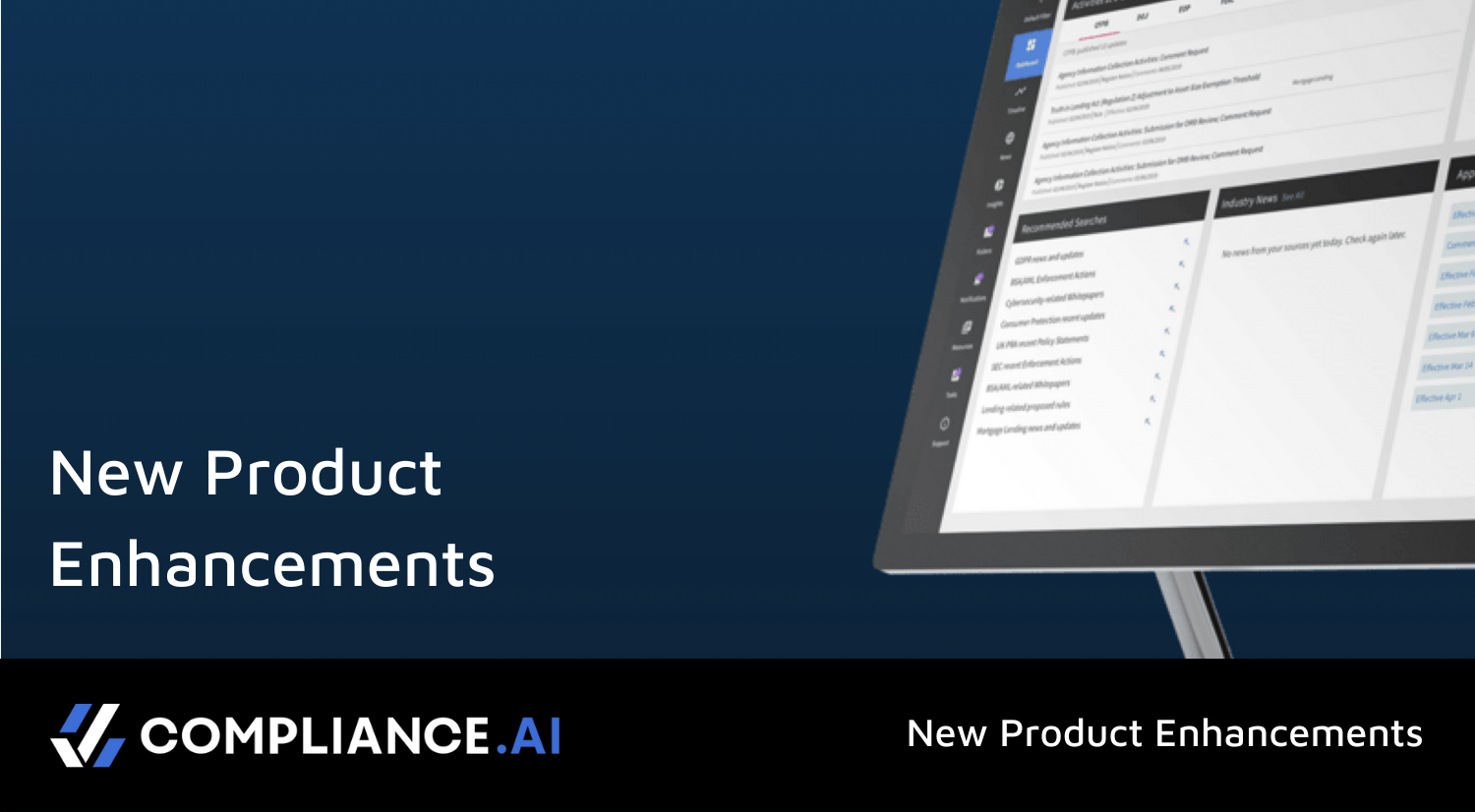2020 was a whirlwind year for compliance professionals, as a global pandemic, a chaotic regulatory environment, and a changing workplace model all posed severe challenges to companies. Make no mistake, those challenges aren’t going away soon in 2021, especially as compliance officers report more regulatory inquiries rolling in during the pandemic.
Case in point. A recent survey by the Society of Corporate Compliance revealed that the Pandemic has fueled an increase in the number of inquiries to the compliance team. Across all industries, 36% of compliance departments reported that there has been a “somewhat or large increase” in inquiries, compared to just 27% showing a decrease.
Compliance managers also reported “an increased risk” of compliance failures stemming from COVID-related workplace issues. According to the survey, the risk of compliance failures increased in the eyes of 77% of compliance officers.
Overall, the SCC survey points to a disturbing trend in compliance management going forward – and companies looking to stay within regulatory guard rails best take notice.
“The COVID-19 pandemic has upended countless organizations and how people work,” the report states. ‘Supply chains have been disrupted, operations have slowed or stopped, and large segments of the workforce have turned their homes into offices. Compliance programs have also felt the impact. Teams have had to adjust the way they work to ensure that regulatory mandates are still met – all while staying on top of the myriad regulation changes meant to address the pandemic.”
Compliance Lessons Learned in 2020
With 2020 now in the rear view mirror –but the pandemic still wreaking havoc – what lessons learned from the old year can compliance leaders leverage in the new year? That list begins with a mix of new and old regulatory issues, with these “lessons learned” at the top of that list.
Lesson 1: There is no “pandemic-proofing” your compliance operations.
It sounds good in theory, but there are just too many unanswered questions with the shift to remote work still in its nascent stage.
From protecting a remote workforce from cybersecurity risks to questions about the legality of mandating that employees be vaccinated in 2021–and a host of other open-ended issues in between – it’s going to take time to sort out the burgeoning regulatory issues impacting companies going forward.
The optimal strategy right now is to prioritize the compliance challenges that need to be answered (and yes, cybersecurity, vaccines and fraud risk should all be on the table) and start the necessary due diligence and risk evaluation to get those questions properly answered to help the firm put robust policies in place for 2021 and beyond.
Lesson 2: Bolster your risk-assessment capabilities.
With so many compliance issues in a state of flux, it’s vital that companies get a firm grip on risk exposure as the pandemic rolls on and uncertainty rules the workplace.
Aside from addressing “normal” regulatory risk issues like implement new compliance obligations, compliance officers will have to collaborate more closely with line of business team leaders to address changing operating procedures that may go unnoticed (like mitigating the risks of theft, bullying, cyber-breaches and other remote work issues) while doing business during a pandemic.
Compliance managers will also need to ramp up internal compliance testing to zero in on company policies and internal controls that might otherwise expose the firm to regulatory risk, and essentially batten down the hatches while dealing with other compliance issues on the fly.
Lesson 3: Turn black swan events like the pandemic into an opportunity.
Nobody actively courts massive disruptions like a global pandemic, but when black swan events do occur, use it as a good time to generate compliance policy changes that improve and protect the company going forward.
These changes, which might otherwise never be made during “normal” times , could include crisis management training, where employees and contractors can hone their skills in dealing with socioeconomic disruptions, natural disasters, and global epidemics.
With the use of cloud-based professional safety training programs, companies can climb out of the pandemic morass better trained and better skilled to handle the next pandemic (or another comparable calamity) and thus build a safer, stronger, and more robust safety and security policy.
The Takeaway on 2020 – and Forward-Looking Strategies for 2021.
Company decision-makers have always focused on key issues like business continuity, profit generation, cash flow. During the global pandemic, decision-makers now prioritize how to adapt their businesses to a remote workforce model. During this period, it’s imperative that company compliance officers keep a sharp eye to prevent misconduct, fraud, and accidents. Continued diligence and ongoing risk management assessment are essential.
In fact, compliance managers should be aware of a simple, yet highly-effective management concept going forward in 2021: The protective measures taken today will set the tone for business disruption events that happen down the road.
For compliance officers, that might be the biggest lesson of all as companies shift into higher gear in early 2021.





